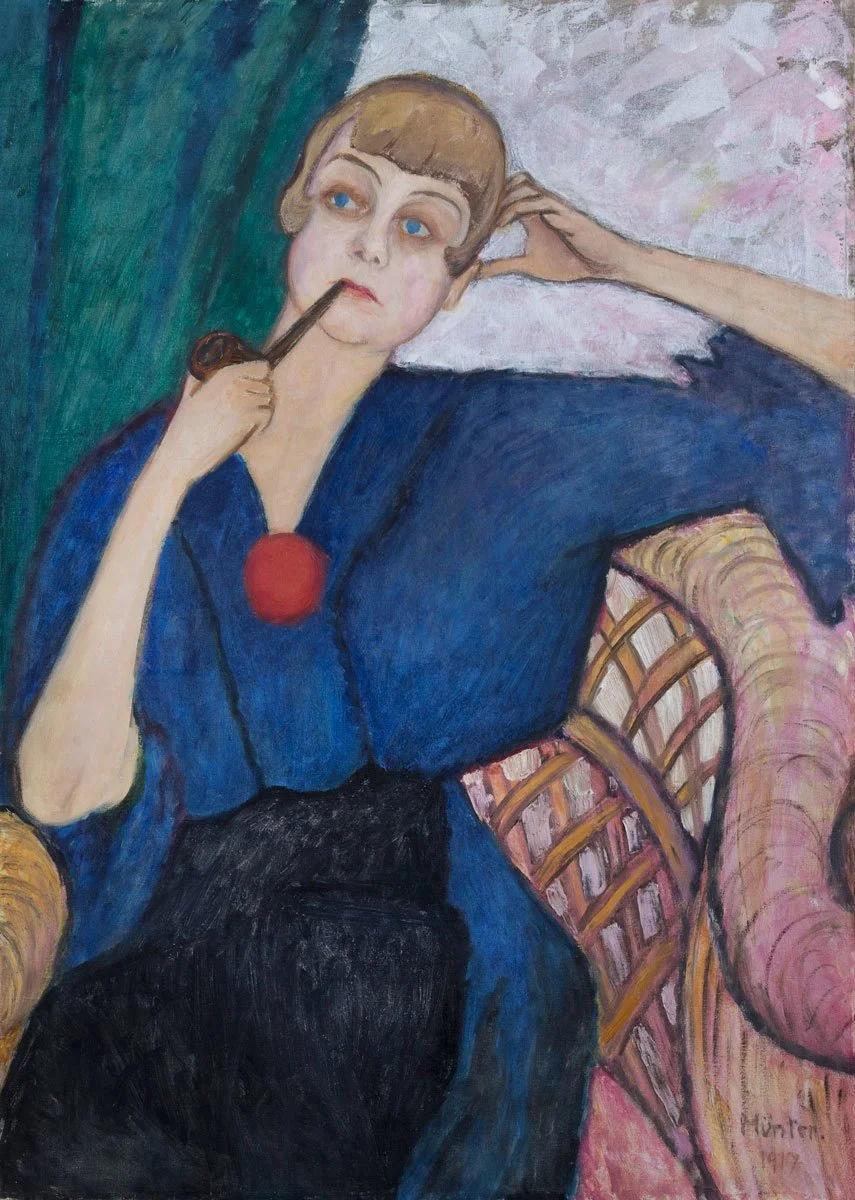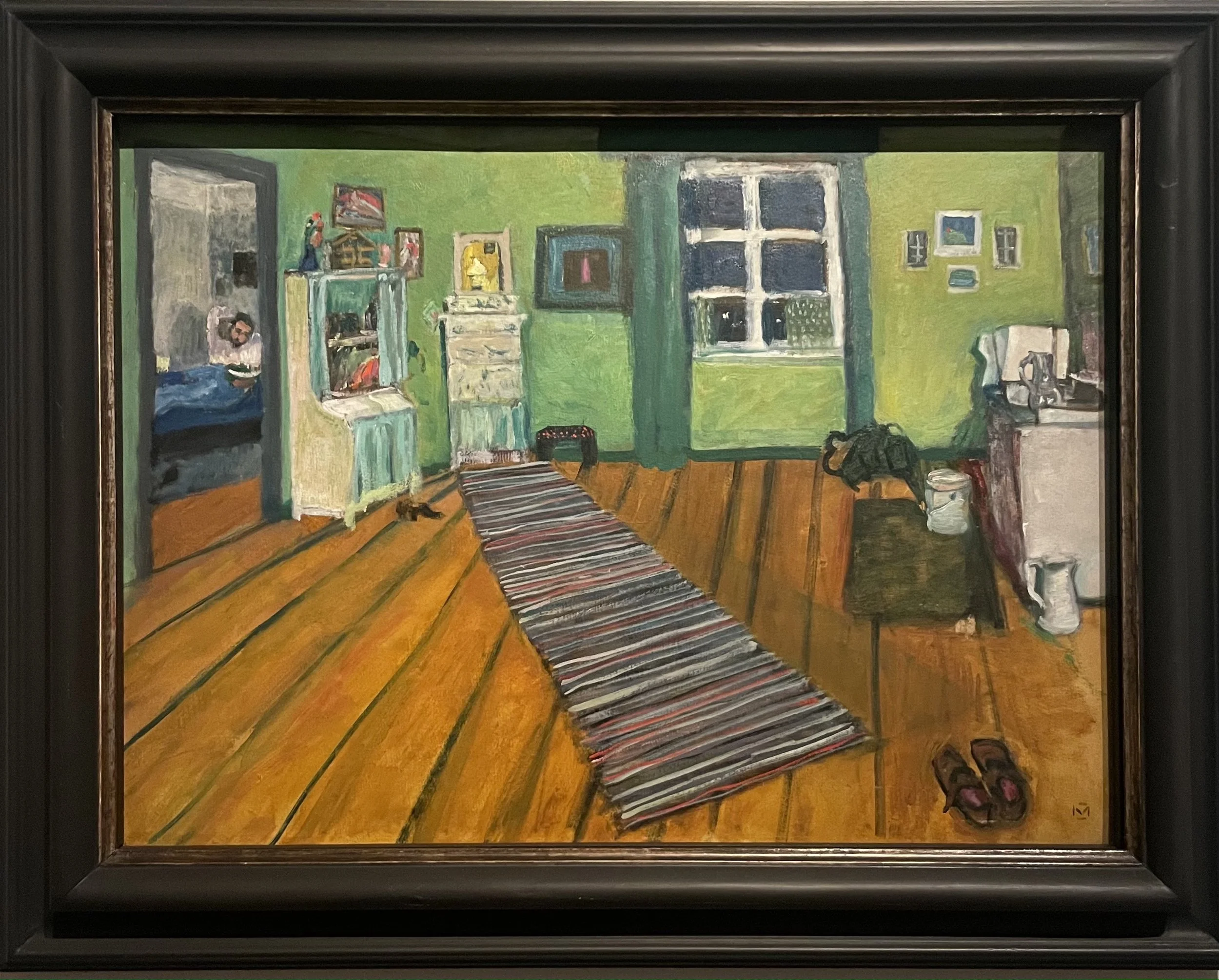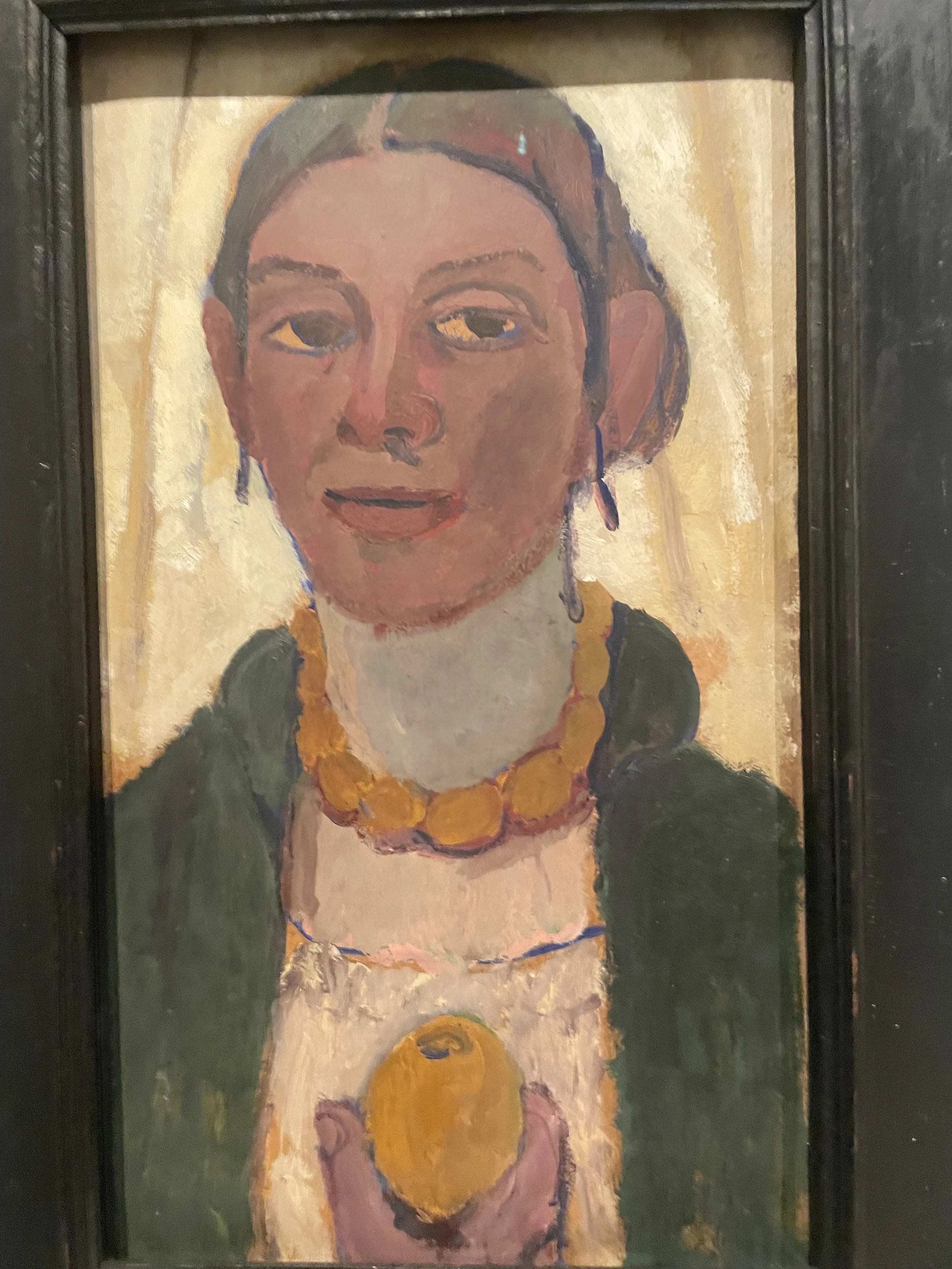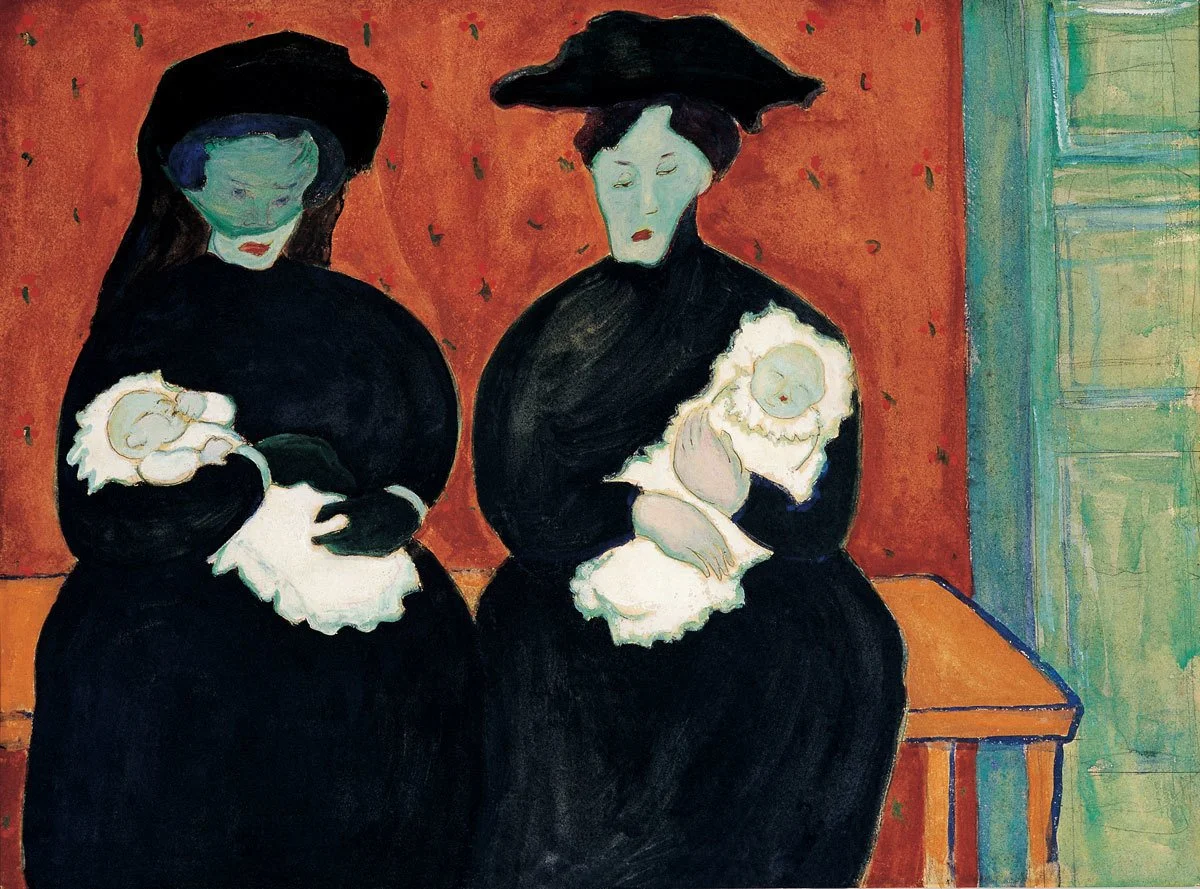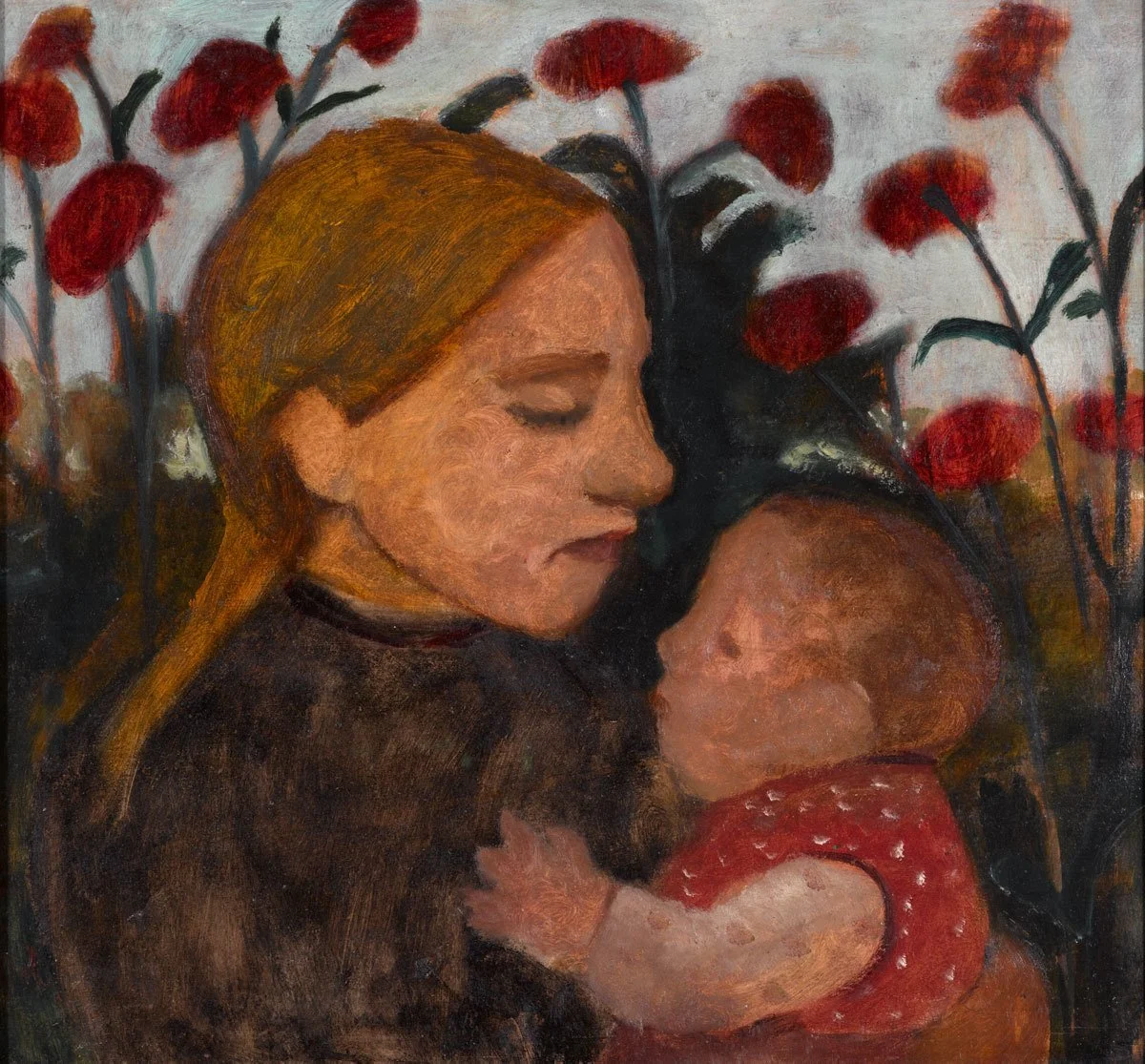‘Making Modernism’ @ The Royal Academy of Arts
Making Modernism at The Royal Academy of Arts (RA), London shines a light on the trailblazing work of four Modernist women artists for the first time in the UK. Entirely centred on Paula Modersohn-Becker, Käthe Kollwitz, Gabriele Münter, and Marianne Werefkin, the exhibition emphasises the group’s enormous contributions to the evolution of Modernism.
Although their work has been celebrated in their homeland Germany, the artists’ work has seldom been explored elsewhere, and as such, they have often been forgotten about elsewhere. Through this exhibition, the RA aims to emphasise the group’s enormous contributions to the evolution of Modernism, and, in doing so, aid in the current restructuring of the art historical canon. More importantly, the exhibition aims to celebrate how each of these female painters revolutionised the art practice through the originality of their work, despite the societal hardships they endured as women in the early twentieth century.
Gabriele Münter, Portrait of Anna Roslund, 1917. Oil on canvas, 94 x 68 cm. Source: Royal Academy of Arts, London.
Upon entering the exhibition, spectators are immediately presented with Münter’s Portrait of Anna Roslund (detail) (2017). Relating to the room’s overall theme of “Ourselves and Others”, this picture is the first in a series of portraits that depict both the artist and other female sitters during moments of stillness within their busy domestic lives. In these contemplative portraits, the home is intellectually conceived as a social construction in which women’s sophisticated skills and abilities were restricted and limited, and their essence and self-realisation were suppressed.
Gabriele Münter, Interior in Murnau, 1910. Oil on cardboard, 53 x 71 cm. Image: Carolina Lorenzini.
By contrast, in Münter's Interior in Murnau (2010), the artsist reduced the status of the figure, who may be identified as her lover of twelve years, Wassily Kandinsky, in comparison to the room. By abstracting the dimensions of the walls and furniture to the point where they lose all sense of orientation and perspective, Münter presents a world in which man is disjoined from the typically female-dominated space.
“After a short period of agony, I made a great leap - from copying from nature, in a more or less Impressionist style, to feeling the content of things - abstracting - conveying an extract”
Aware of the originality of her work, she opened the way to a new perception of the art object. By engaging with it to express the inner spirituality of subjects, she went beyond the bare reproduction of what she could see to the extent of representing what she could feel. Thus, she was making the first step through a proper artistic revolution, anticipating what would become the essence of Modernism. Therefore, it is puzzling that she is not widely recognised by the public. It seems that she is known more for her relationship with Kandinsky, rather than for the merits of her innovative artistic practice.
Undoubtedly this is what RA attempts to resolve with this exhibition - to make the audience aware of the disparity between female and male artists during the twentieth century. Moreover, it nudges spectators to realise that, even today, Art History continues to be biased towards outdated gender stereotypes internalised by society over centuries.
Paula Modersohn-Becker, Self-Portrait with Lemon, 1906. Oil tempera on cardboard, 50 x 27.5 cm. Image: Carolina Lorenzini.
Continuing with this narrative, self-portraits by Paula Modersohn-Becker and Käthe Kollwitz transport spectators into unknown emotional and intellectual realms. Both Self-portrait with Lemon (1906) and Self-portrait (detail) (1889) respectively contains a riveting sense of self-awareness, energy, power, and intensity.
Käthe Kollwitz, Self-portrait (detail), 1889. Pen, brush and ink on drawing carton, 31.2 x 24.2 cm. Source: Royal Academy of Arts, London.
Proposing themselves as the protagonists within the painting, the artists invite an emotional connection with viewers. Consequently, one feels the willingness of women to be present to the public, to give their vision of reality, to make a difference in the art world, and to make their identities as women artists known.
Exploring yourself and, more importantly, accepting your limits with resilience is one of the most challenging but ultimately rewarding human experiments. However, it is also one of the traits that best defines the female soul and its profundity.
For me, the self-portraits are the most intriguing part of the show because they are emblematically feminist by remaining genuine and authentic. They highlight how a woman’s power is found in their ability to be both fragile and assertive at once. Filled with emotions belonging to personal stories, these self-portraits reflect the inner life of women who do not wish to appear simply as female subjects on a canvas but as idiosyncratic humans who have suffered, lived, and struggled for self-realisation.
A more controversial and complex theme is investigated by the works in the room named "The Century of the Child”. Once again, the revolutionary spirits of these artists are emphasised. The pieces accentuate a sense of loss and deprivation by revealing the anxiety of being forced to give up on personal realisation for the sake of being present as a mother.
Marianne Werefkin, Uncanny Twins, 1909. Tempera on paper, 27.5 x 36.5 cm. Source: Royal Academy of Arts, London.
In Marianne Werefkins' Uncanny Twins (1909), a striking contrast between new life and death is illustrated by the purity of the newborn babies and the grieving women. The painting is a symbol of the struggles of mother artists. Although motherhood comes with the joy of caring for a child, this love comes at the cost of their artistic careers. Isn't this one of the most debated issues that affect women's role even in contemporary society?
Paula Modersohn-Becker, Girl with child, 1902. Oil on cardboard, 45.3 x 50.5 cm. Source: Royal Academy of Arts official website.
By contrast, Modersohn-Becker's Girl with child (1902) celebrates the sacred bond between mother and child. Here, love and inner peace are abundant, thereby demonstrating how motherhood is not all about sacrifice.
On the surface, the exhibition provides a space for spectators to appreciate important women artists. However, the selection of self-portraitures, still-life, female bodies, landscapes, scenes of childhood, and urban scenes further disclose how this praise is long overdue. The exhibition successfully iterates how these artists have broken stereotypes, challenged tradition, and revolutionised the way women artists are viewed.
Thankfully, today many spaces across the world allow female artists to finally emerge and enjoy the gratification they deserve. In this cultural context, one can internalise and empathise with the emotionality of their works. In visiting Making Modernism viewers experience an extraordinary encounter of the art of the past with the principle of the future. More specifically, this exhibition transports spectators to the early twentieth century, allowing for a deeper understanding of the sacrifices women throughout history endured. Yet, it is surprising how these artists are seldom recognised. With luck, more institutions will follow in the footsteps of the RA, for it is imperative women artists not be forgotten but rather celebrated.
Making Modernism is on view until 12 February 2023 at The Royal Academy of Arts, London.
Carolina Lorenzini
Reviews co-editor, MADE IN BED


